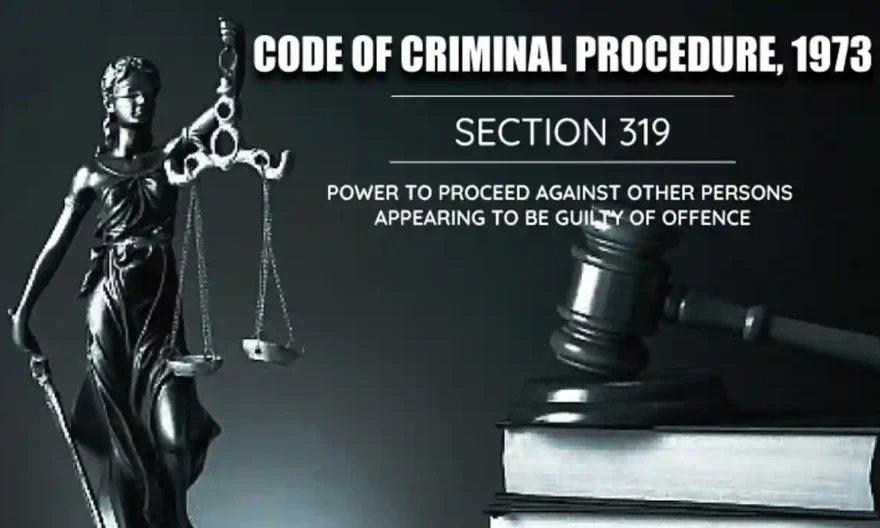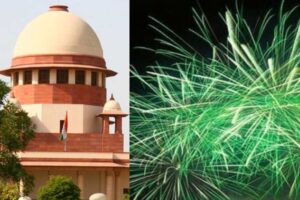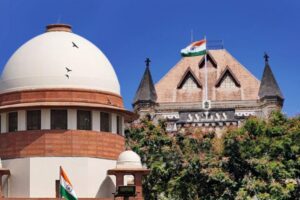
It must be said right at the start before stating anything else that a Constitution Bench of the Supreme Court in a most learned, laudable, landmark and latest judgment titled Sukhpal Singh Khaira v. State of Punjab in Criminal Appeal No. 885 of 2019 along with SLP (Crl.) No. 6960/2021, Crl. Appeal No. 886/2019 & SLP (Crl.) No. 5933/2019 and cited in 2022 LiveLaw (SC) 1009 that was pronounced as recently as on December 5, 2022 in exercise of its criminal appellate jurisdiction has issued elaborate guidelines pertaining to the exercise of powers under Section 319 of the Code of Criminal Procedure for summoning additional accused during trial. It must be mentioned here that a Bench of Apex Court comprising of Justice S Abdul Nazeer, Justice BR Gavai, Justice AS Bopanna, Justice V Ramasubramanian and Justice BV Nagarathna issued the commendable guidelines while answering certain issues referred to it. We shall discuss those commendable guidelines later in detail.
At the very outset, this brief, brilliant, bold and balanced judgment authored by Justice AS Bopanna for a Constitution Bench of the Apex Court comprising of Justice S Abdul Nazeer, Justice BR Gavai, himself, Justice V Ramasubramanian and Justice BV Nagarathna sets the ball rolling by first and foremost putting forth in para 1 that, “In the above appeal, the order dated 17.11.2017 passed by the High Court of Punjab and Haryana in Criminal Revision No.4070 of 2017 and Criminal Revision No.4113 of 2017 are assailed. Through the said order, the High Court has dismissed the Criminal Revision Petitions and upheld the order dated 31.10.2017 passed by the Trial Court summoning the appellant as an additional accused by exercising the power under Section 319 of the Criminal Procedure Code, 1973 (‘CrPC’ for short). For the purpose of narration of facts the case in Criminal Appeal No.885 of 2019 is noted.”
To put things in perspective, the Bench then envisages in para 2 that, “The position which led to the appellant being summoned is that on 05.03.2015 a First Information Report was lodged in the Police Station Sadar, Jalalabad against 11 accused for the offence under Sections 21, 24, 25, 27, 28, 29 and 30 of Narcotic Drugs and Psychotropic Substance Act, 1985 (‘NDPS’ for short), Section 25-A of Arms Act and Section 66 of the Information Technology Act, 2000 (‘IT Act’ for short). In the charge sheet dated 06.09.2015, 10 accused were summoned and put to trial in Sessions Case No. 289 of 2015. Though the second charge sheet was filed by the police, the same did not name the appellant herein as an accused.”
As it turned out, the Bench then enunciates in para 3 that, “In the trial conducted before the learned Sessions Judge also, initially the name of the appellant was not mentioned by the witnesses. After the initial recording of evidence, the prosecution filed an application dated 31.07.2017 under Section 311 of CrPC for recalling PW-4 and PW-5, which was allowed. In the further examination of the said recalled witnesses, they named the appellant herein. The prosecution thereafter filed an application on 21.09.2017 invoking Section 319 of CrPC in the said Sessions Case No.289 of 2015 for summoning additional 5 accused, including the appellant herein. The summoning of additional accused was sought based on the evidence tendered by PW-4, PW-5 and PW-13.”
Be it noted, the Bench then notes in para 4 that, “It is to be noted that out of the 11 accused, the proceedings in Sessions Case No.289 of 2015 were against the 10 accused and since one of the accused was not available, the case in that regard was split up (bifurcated) and was subsequently numbered as Sessions Case No.217 of 2019 on 03.09.2019. In that background, it is seen that as on the date when the application under Section 319 CrPC was filed on 21.09.2017, the only proceeding pending was Sessions Case No.289 of 2015. In that regard, in respect of the proceedings against the 10 accused, the learned Sessions Judge pronounced the judgment on 31.10.2017 whereby one of the accused was acquitted, while the remaining 9 accused were convicted and sentence was imposed on 31.10.2017. The learned Sessions Judge, also allowed the application filed under Section 319 of CrPC on the same day i.e., 31.10.2017 and summoned the appellant to face trial. It is in that backdrop the appellant assailed the order dated 31.10.2017 summoning him to face trial, since according to him such order is not sustainable in law as the same was not passed in a proceeding pending before the learned Sessions Court as at the stage when the power to summon was exercised by learned Sessions Judge, the judgment of conviction and sentence had already been passed earlier on 31.10.2017. The said order assailed in Revision Petition No.4070 and 4113 of 2017 was dismissed by the High Court, which has led to the present proceedings.” As we see, the Bench then points out in para 5 that, “The instant petition was heard before a bench consisting of two Hon’ble Judges of this Court on 10.05.2019 wherein, in the course of assailing the summoning order, the decisions of this Court in the case of Shashikant Singh vs. Tarkeshwar Singh (2002) 5 SCC 738 and the decision in the case of Hardeep Singh vs. State of Punjab (2014) 3 SCC 92 rendered in the context of the power exercisable under Section 319 of CrPC were noted. In that context, the Bench of two Hon’ble Judges of this Court was of the opinion that the question with regard to the actual stage at which the trial is said to have concluded is required to be authoritatively considered since the power under Section 319 of CrPC is extraordinary in nature.”
To be sure, the Bench then lays bare in para 6 that, “In that view, the following substantial questions of law were raised for further consideration and the matters were placed before Hon’ble the Chief Justice of India for constitution of a Bench of appropriate strength to consider the questions raised. Hon’ble the Chief Justice has accordingly constituted this Bench to consider the questions raised, which read as hereunder: –
I. Whether the trial court has the power under Section 319 of CrPC for summoning additional accused when the trial with respect to other coaccused has ended and the judgment of conviction rendered on the same date before pronouncing the summoning order? II. Whether the trial court has the power under Section 319 of the CrPC for summoning additional accused when the trial in respect of certain other absconding accused (whose presence is subsequently secured) is ongoing/ pending, having been bifurcated from the main trial? III. What are the guidelines that the competent court must follow while exercising power under Section 319 CrPC?”” Most significantly, the Bench then mandates in para 33 postulating that, “For all the reasons stated above, we answer the questions referred as hereunder:- “I. Whether the trial court has the power under Section 319 of CrPC for summoning additional accused when the trial with respect to other co-accused has ended and the judgment of conviction rendered on the same date before pronouncing the summoning order?
The post SECTION 319 CRPC : 12 GUIDELINES ISSUED BY SUPREME COURT’S CONSTITUTION BENCH TO SUMMON ADDITIONAL ACCUSED DURING TRIAL appeared first on The Daily Guardian.




